Fragrant, citrus-kissed, and gently spiced—this vegan red curry is made without any store-bought paste, letting whole spices and coconut milk shine.
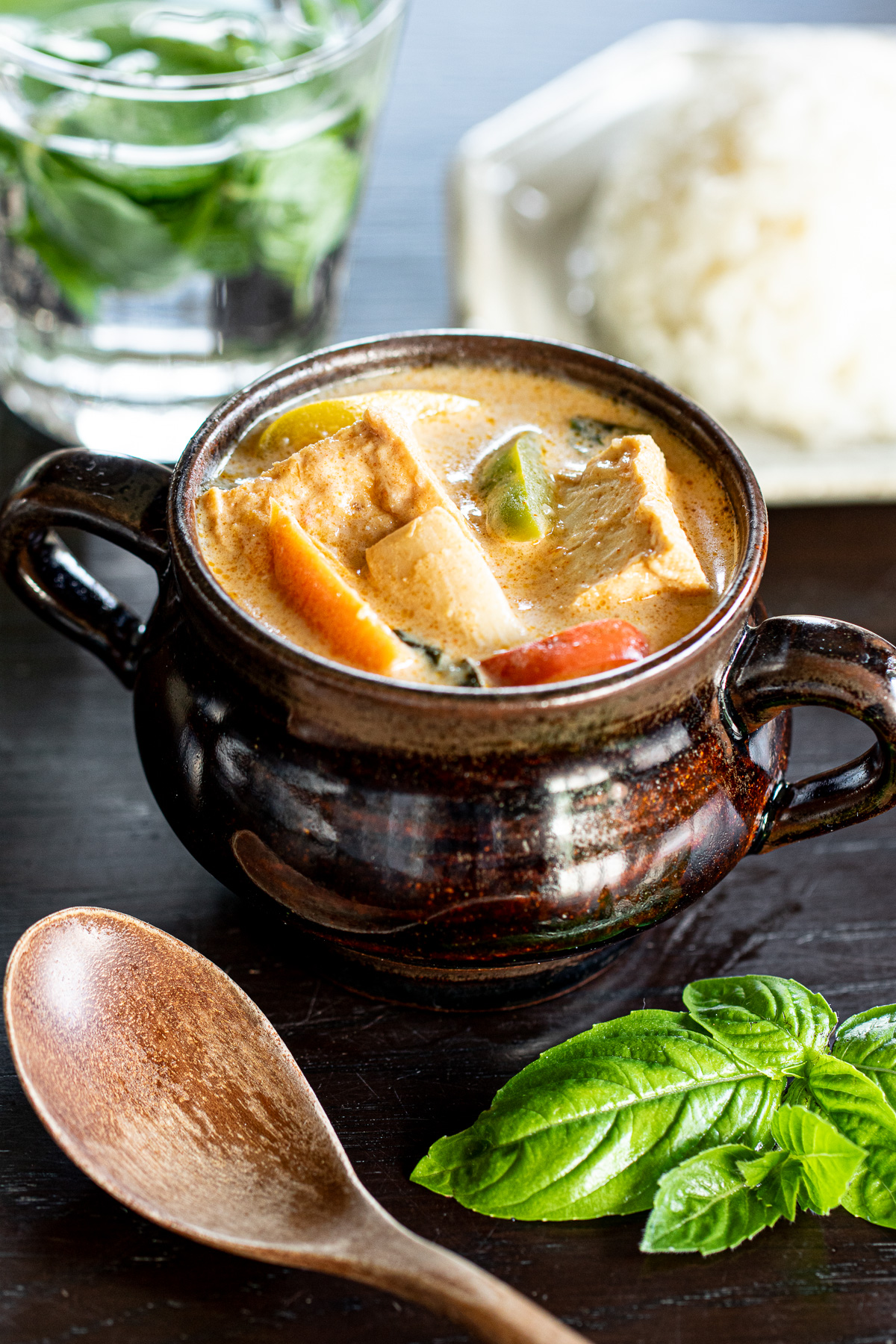
This simple red curry brings out the warmth of clove and cumin, softened by coconut milk and brightened with citrus.
A gentle Thai-inspired dish for quiet evenings at home.
Jump to:
🌳 Journal from the Kitchen
August has arrived.
The typhoon has passed,
and now the trees deepen their green with each passing evening rain.
I sit in the shade, watching soft clouds gather along the ridge,
and remember a red curry I once had in Thailand—
rich with spice, sweet with coconut.
That boldness is beautiful,
but today I want something gentler.
No curry paste.
Just the spices I keep at home—
clove, cumin, coriander—
and a hint of citrus from sudachi.
It’s a quiet kind of vegan red curry,
but the soul of Thai curry is still there:
a gentle harmony of sweet, salty, sour, and savory.
Something to warm the body,
without burdening the heart.
Good with rice,
or poured over a bowl of chilled soba.
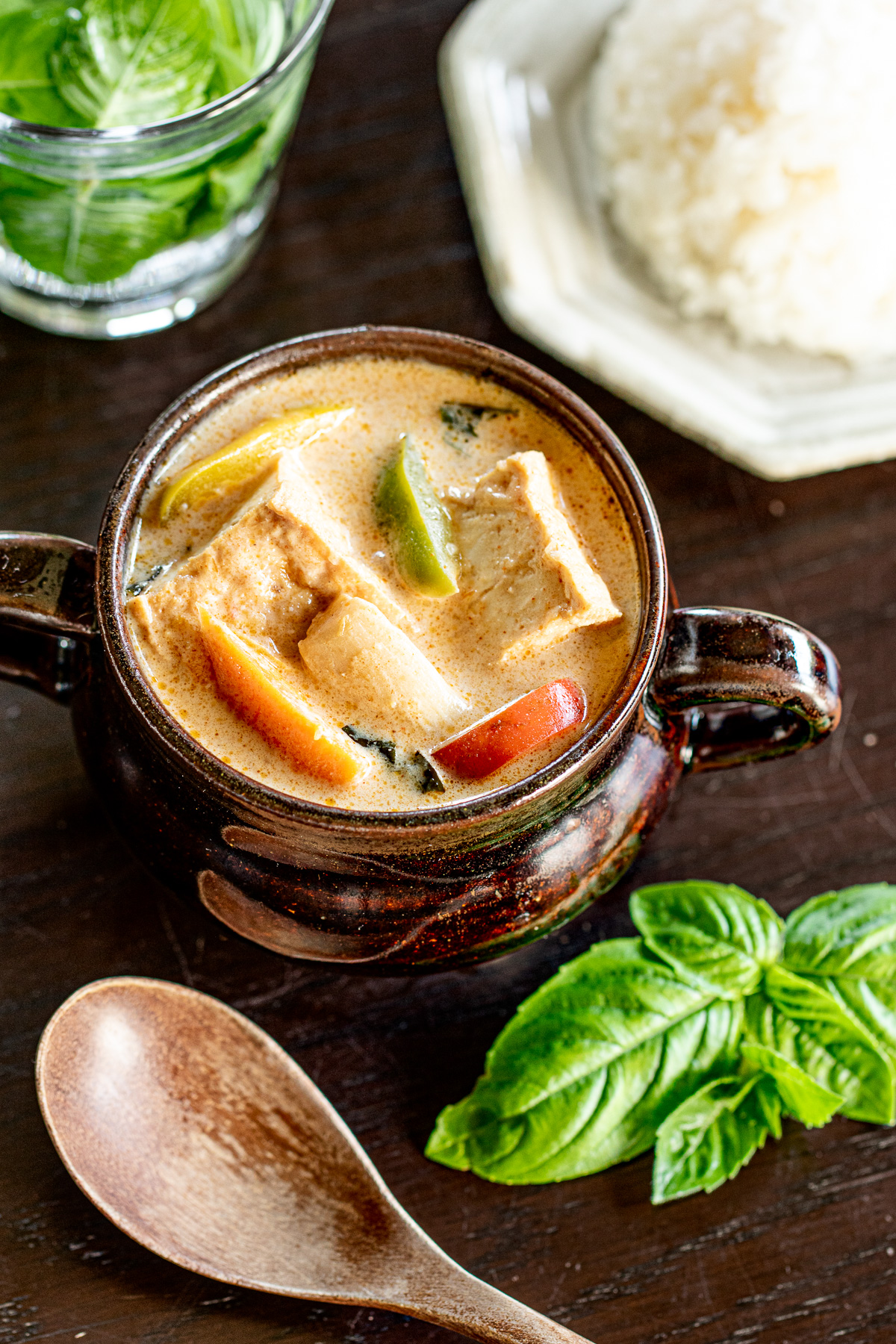
🌿 About This Vegan Red Curry (No Curry Paste)
- No store-bought curry paste – made with familiar pantry spices.
- Gentle, homemade flavor – clove, cumin, coriander, and a hint of citrus (sudachi or lime).
- Creamy coconut base – mildly spiced, with a round and soothing taste.
- Umami-rich – seasoned with onion koji , a fermented Japanese condiment that adds deep, plant-based umami.
- Naturally vegan – no shrimp paste or fish sauce.
- Versatile serving – enjoy it over rice or even with soba noodles.
🗻 Ingredients
Here’s what you’ll need to bring this naturally vegan red curry together.
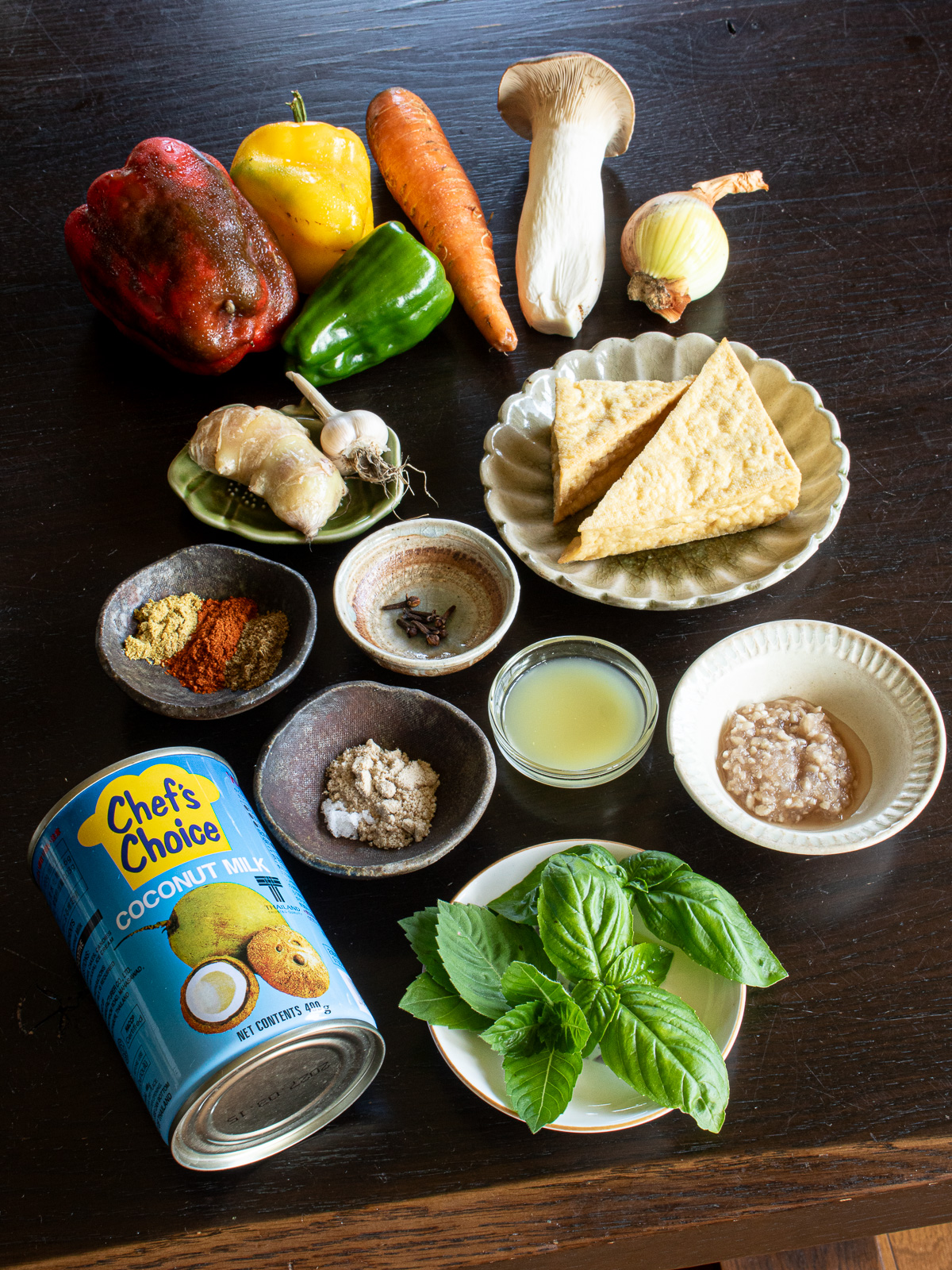
▶︎ Vegetables
- paprika – any color you like
- eringi (king oyster mushroom)
- thick-fried tofu (atsuage / 厚揚げ)
- carrot
- onion
- fresh ginger & garlic
▶︎ Spices
- paprika powder (for color and gentle warmth)
- ground coriander
- ground cumin
- whole cloves
▶︎ Seasoning
- onion koji (vegan consomme)
▶︎ Other
- neutral oil
- water
- coconut milk
▶︎ Finishing (optional)
- salt
- sugar
- juice from sudachi or kabosu (Japanese citrus; lime works too)
- a little zest from the above citrus
- sweet basil or holy basil, for garnish
👇 Scroll down to the bottom for a handy printable recipe card with precise measurements.
📖 Instructions
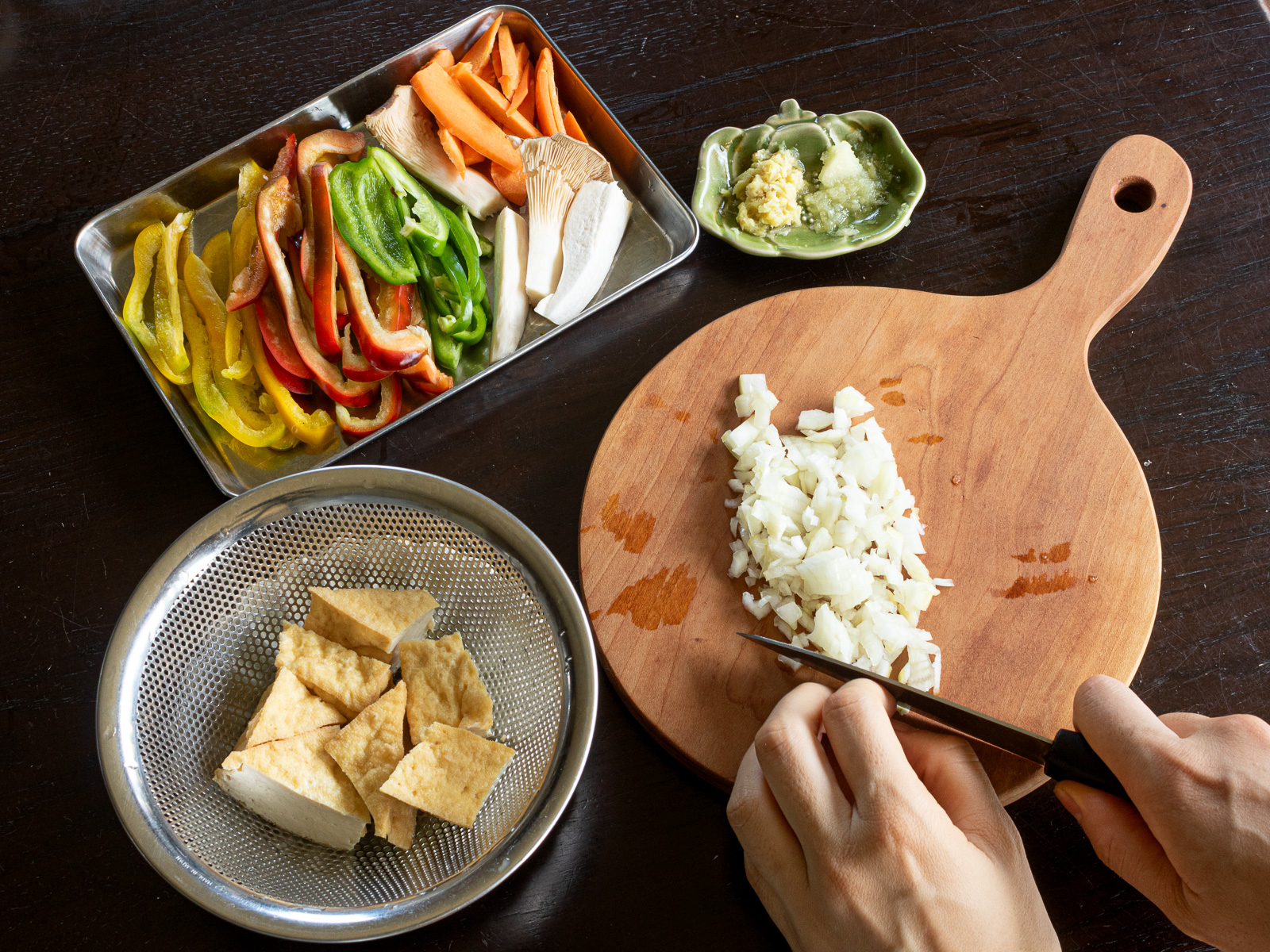
- Prepare the ingredients
- Finely chop the onion.
- Slice paprika, eringi, and carrot into bite-sized pieces.
- Rinse or blanch the atsuage with hot water to remove excess oil, then cut into cubes.
- Grate the garlic and ginger.
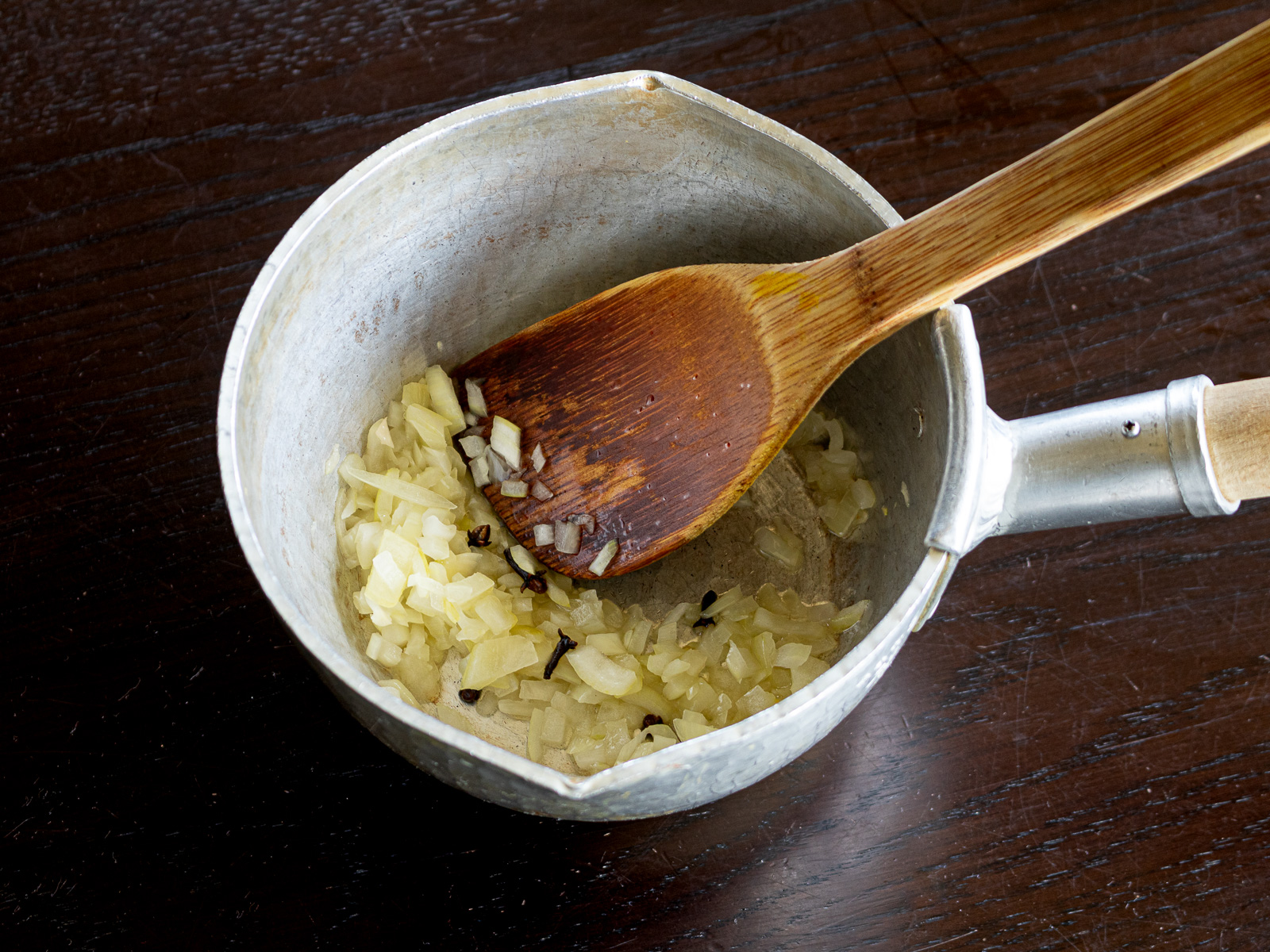
- Bloom the spices
- In a pan, heat neutral oil and add the whole cloves over medium heat.
- Let them release their aroma.
- Add the chopped onion and sauté until softened.
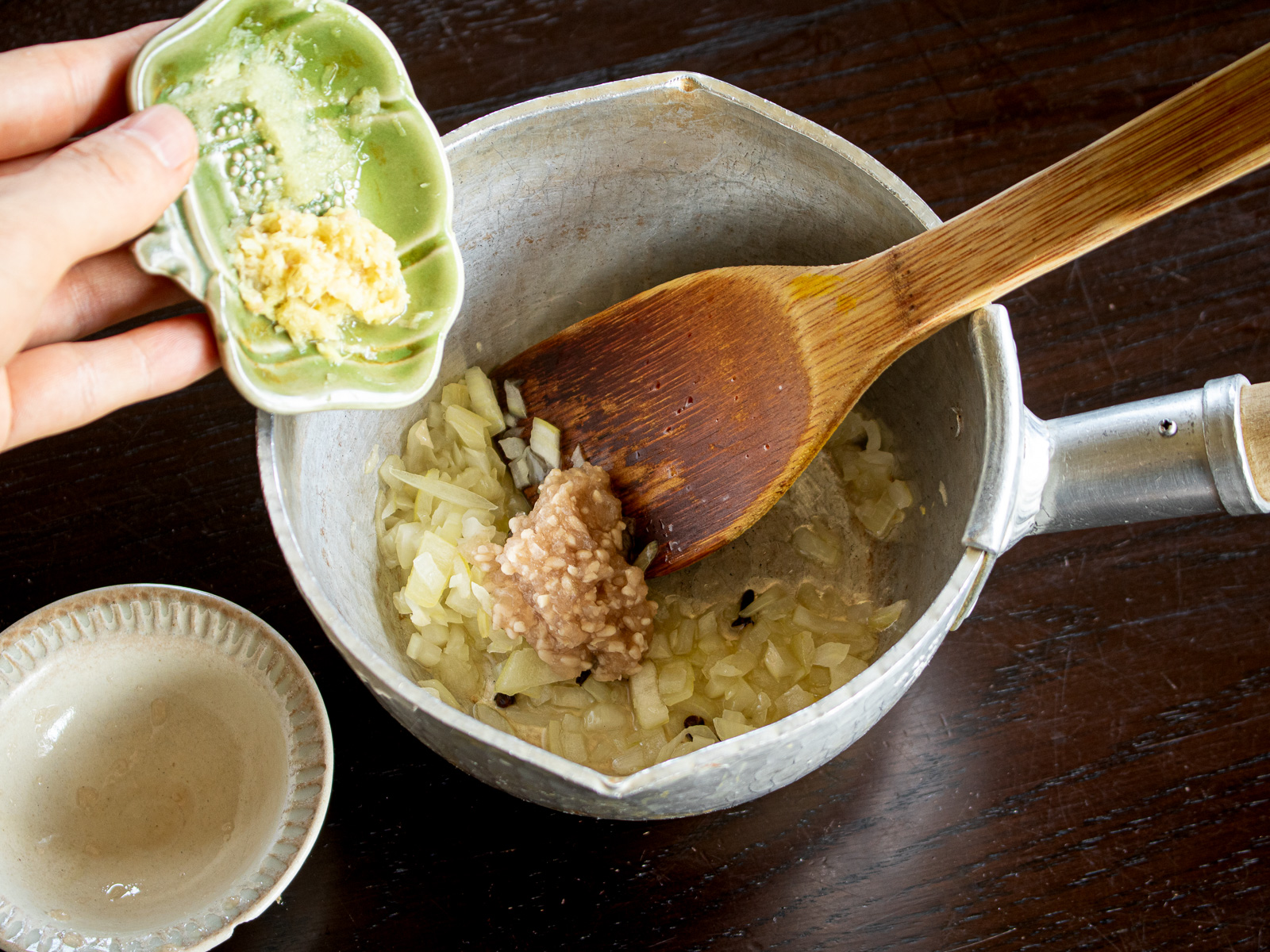
- Sauté aromatics
- Stir in grated ginger, garlic, and onion koji.
- Continue to sauté gently until fragrant.
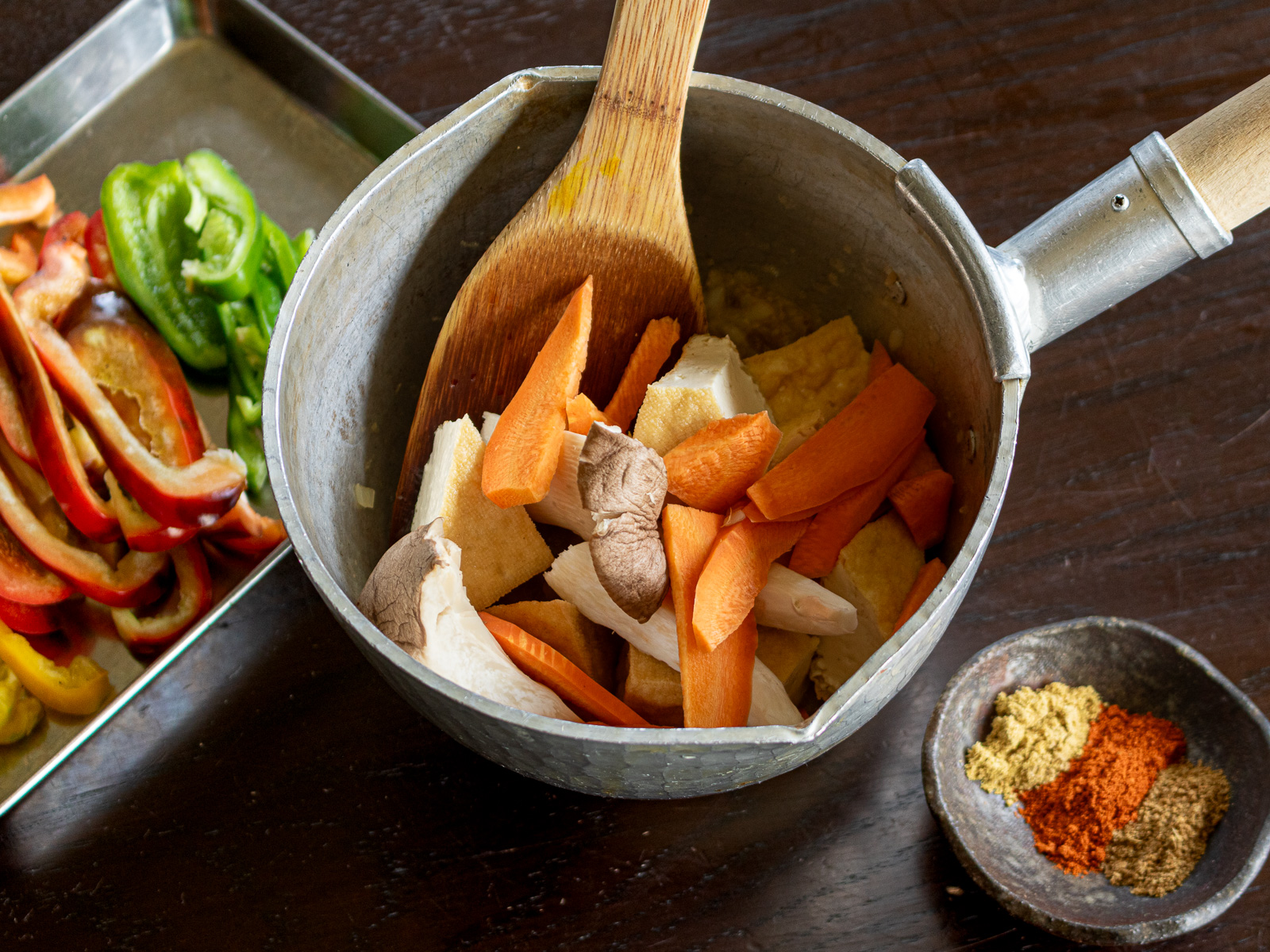
- Add the vegetables
- Add all the vegetables except paprika.
- Stir to coat everything evenly with the seasoned oil.

- Add ground spices
- Sprinkle in paprika powder, cumin, and coriander.
- Sauté again until the spices are aromatic.

- Simmer
- Pour in water.
- Simmer until the vegetables are tender and flavors come together.
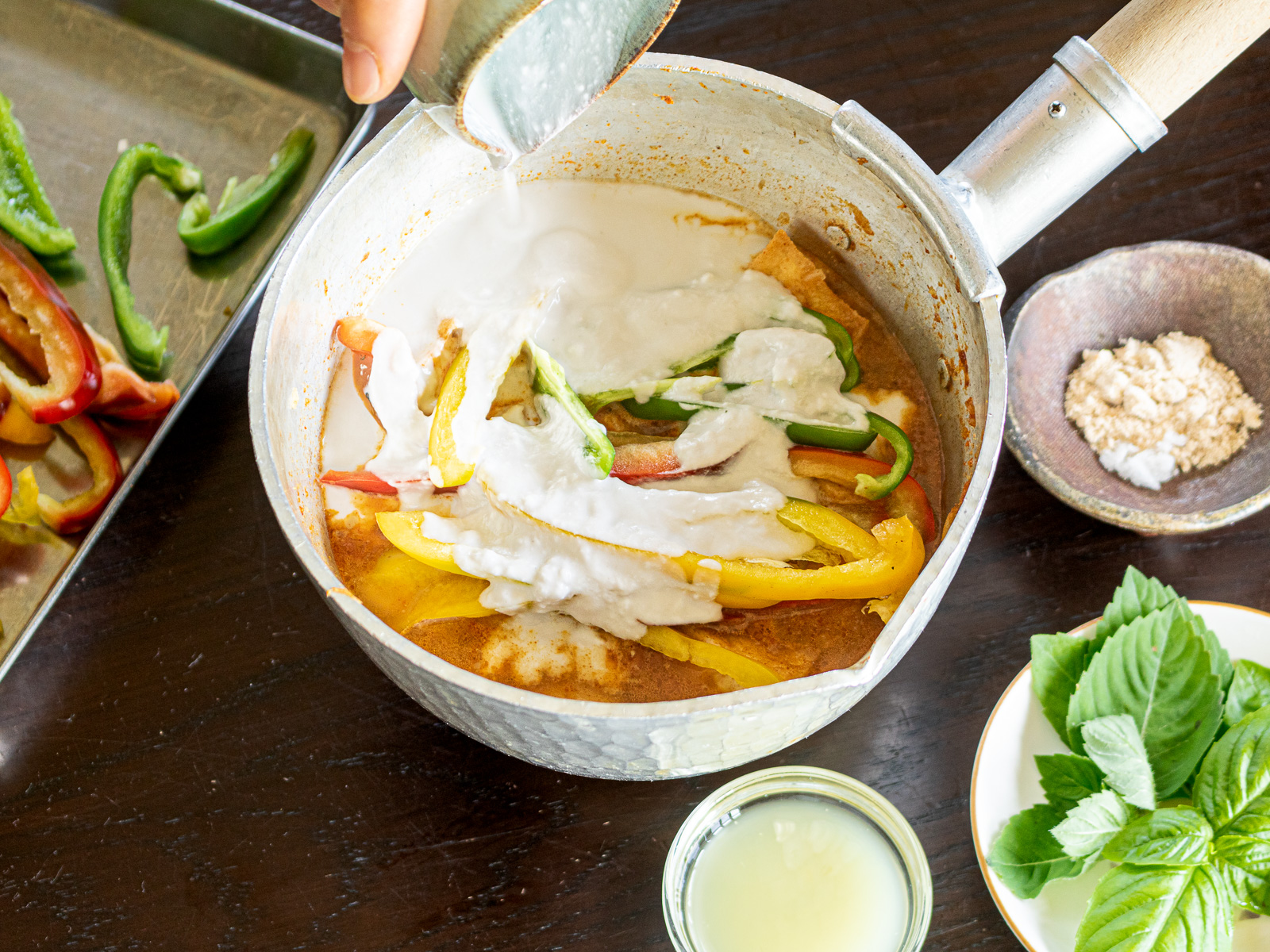
- Add coconut milk and paprika
- Add the paprika slices and coconut milk.
- Simmer briefly, just to bring everything together without overcooking the paprika.
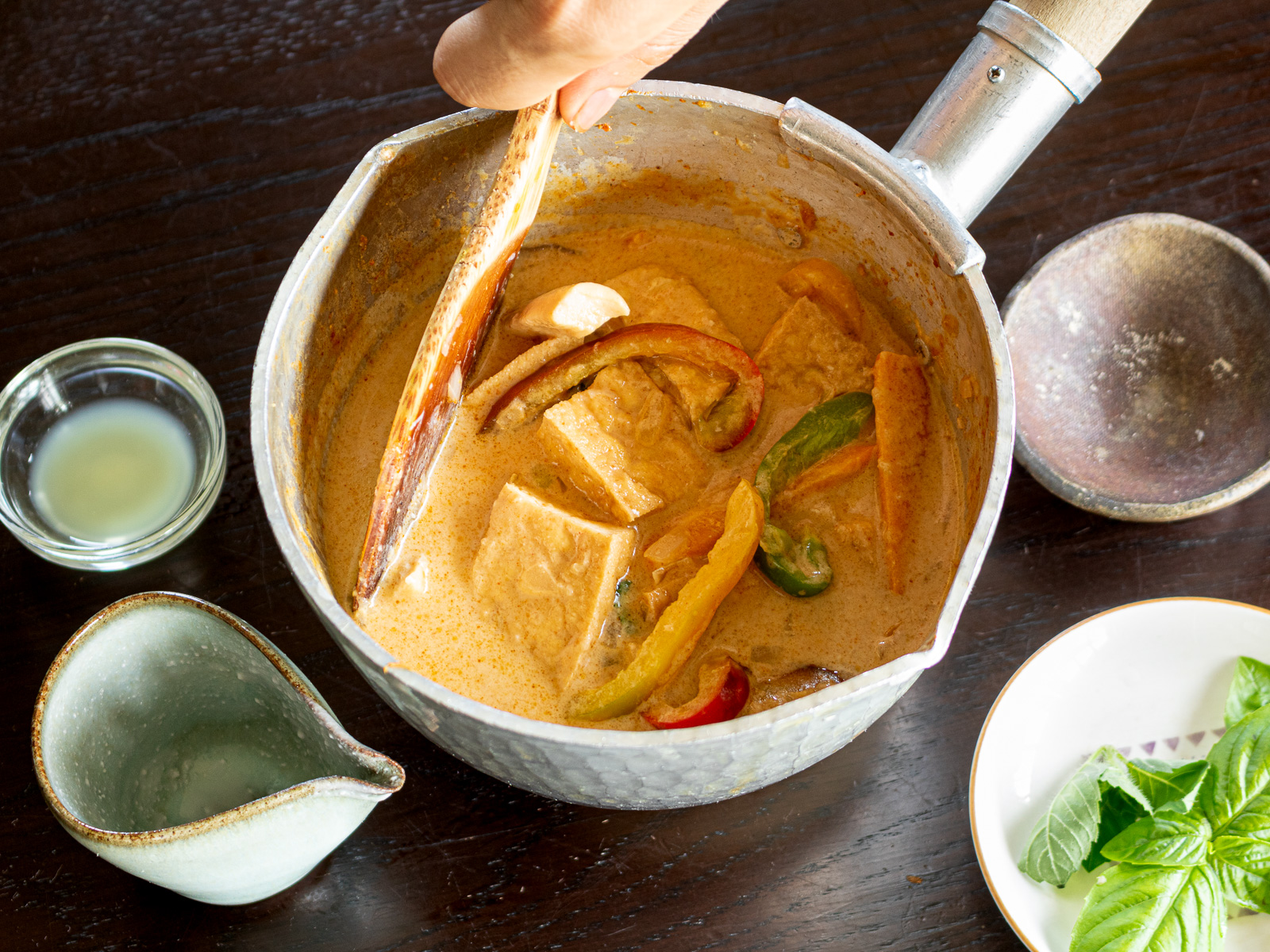
- Finish and season
- Adjust the taste with a pinch of salt and sugar.
- Stir in citrus juice, a little zest, and chopped basil.
- Serve warm.
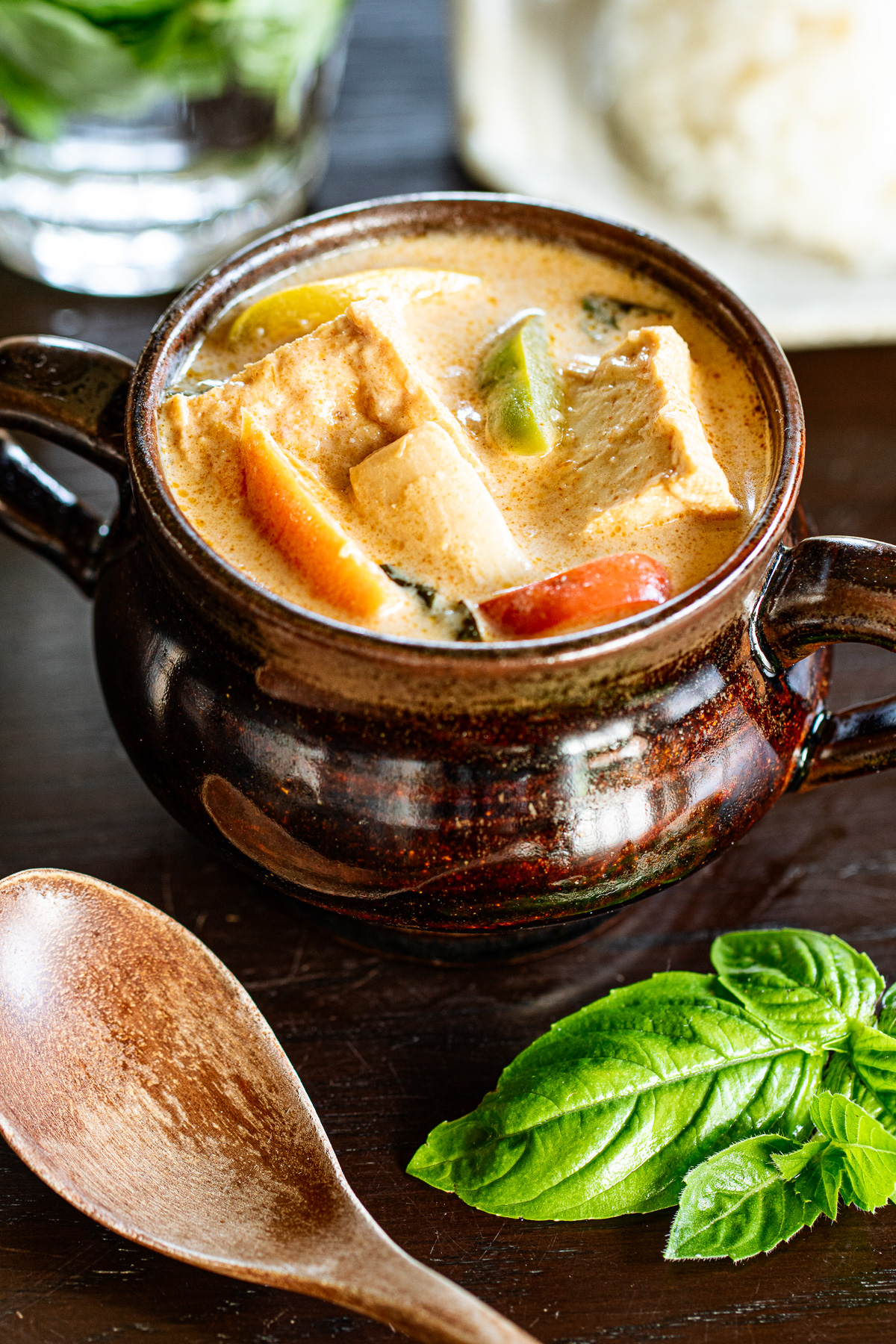
🫙 Storage
- This curry keeps well in the fridge for 2–3 days.
- The spices settle, the flavors deepen — often tasting even more balanced the next day.
- Store in an airtight container and reheat gently over low heat.
- Freezing is possible, though coconut milk may separate slightly when thawed.
✧ If you plan to freeze, you might prefer to add fresh herbs and citrus zest after reheating.
🔪 Kitchen Notes|Substitution
- Mushrooms: Shiitake, maitake, or any seasonal mushrooms can be used in place of eringi.
- Tofu: Tofu puffs or firm tofu can substitute for atsuage.
- Onion Koji: This naturally fermented condiment adds a mellow, umami-rich flavor — like vegan consomme. If unavailable, try a pinch of vegetable bouillon.
- Citrus: Lime or lemon can be used in place of sudachi or kabosu, though Japanese citrus adds a uniquely fragrant bitterness.
- Spice: For more heat, add chili flakes or fresh red chili with the spices.
📚 FAQ
Yes — while this version is mild and soothing, feel free to add chili flakes or fresh chili when you sauté the spices.
Onion koji is a fermented onion paste rich in umami, often used as a natural vegan consomme. If you don’t have it, you can substitute with a pinch of bouillon powder — though the result will be slightly different in depth and aroma.
You can use soy milk with a splash of oil or cashew cream, but coconut milk gives the dish its signature creaminess and tropical aroma.
Absolutely. While it's lovely with rice, this curry also pairs gently with somen, soba, or even udon. The broth is light enough to enjoy like a soup.

If you feel like whispering a thought, asking a question, or simply saying hello — the comment section is always open.
👒 More Recipes with Coconut Milk ...
This gentle curry inspired me to revisit other coconut-based recipes — all soothing and softly flavored.
☀️ More Vegan Curry Recipes ...
Japanese-style vegan curries I adore:
📝 Recipe Card|Printable

Vegan Red Curry without Curry Paste — Mild, Umami-Rich, and Naturally Vegan
Equipment
- Frying pan or skillet
- grater (for ginger and garlic)
- Knife and cutting board
- Measuring spoons
- Stirring spoon
- Serving bowls
Ingredients
Vegetables
- 1 paprika (medium, any color )
- 1 eringi / king oyster mushroom (medium stalk)
- 140 g thick-fried tofu (atsuage/厚揚げ)
- 50 g carrot (about ½ medium)
- 25 g onion (about ¼ small)
- 2-3 g fresh ginger, grated
- 2-3 g fresh garlic, grated
Spices
- 1 teaspoon paprika powder (for color and gentle warmth)
- ½ teaspoon ground coriander
- ½ teaspoon ground cumin
- 4 whole cloves (small)
Seasoning
- 1 tablespoon onion koji (vegan consomme)
Other Condiments
- 1 teaspoon oil (or as needed)
- 100 ml water
- 7 tablespoon coconut milk
Finishing (Optional)
- pinch of salt (or as needed)
- 1 teaspoon sugar (or as needed)
- 1 tablespoon sudachi or kabosu juice (Japanese citrus; lime can be used as a substitute)
- zest from sudachi or kabosu (to taste)
- sweet basil or holy basil (for garnish)
Instructions
- Prepare Ingredients: Finely mince the onion. Slice paprika, eringi, and carrot into bite-sized pieces. Cut atsuage into manageable cubes, removing excess oil by rinsing under hot water or briefly blanching. Grate garlic and ginger.1 paprika1 eringi / king oyster mushroom140 g thick-fried tofu50 g carrot25 g onion2-3 g fresh ginger, grated2-3 g fresh garlic, grated
- Sauté Spices and Onion: Heat oil in a pan over medium heat. Add whole cloves and toast gently until fragrant. Add minced onion and sauté until translucent and soft.1 teaspoon oil4 whole cloves
- Add Seasonings: Stir in onion koji, grated garlic, and ginger. Cook until aromatic.1 tablespoon onion koji
- Add Vegetables and Tofu: Add eringi, carrot, atsuage, and other vegetables except paprika. Stir well to coat with oil and seasonings.
- Add Ground Spices: Sprinkle paprika powder, coriander, and cumin over the mixture. Stir and cook briefly until spices bloom and smell fragrant.1 teaspoon paprika powder½ teaspoon ground coriander½ teaspoon ground cumin
- Simmer: Pour in water. Bring to a gentle simmer and cook until vegetables are tender.100 ml water
- Add Coconut Milk and Paprika: Stir in coconut milk and sliced paprika. Simmer gently for a few more minutes to blend flavors.7 tablespoon coconut milk
- Finish Seasoning: Add salt, sugar, sudachi or kabosu juice, and zest. Stir in fresh basil leaves. Adjust seasoning to taste.pinch of salt1 teaspoon sugar1 tablespoon sudachi or kabosu juicesweet basil or holy basil
- Serve: Enjoy hot with steamed rice or your choice of noodles.
Notes
- Substitute seasonal mushrooms or firm tofu as you prefer.
- Onion koji adds deep umami; if unavailable, try vegetable bouillon.
- Lime can replace sudachi or kabosu for citrus notes.
- Add chili flakes for a spicier curry.
- Store leftovers in an airtight container refrigerated for 2–3 days.

If this recipe made its way into your kitchen, and you'd like to share that moment, feel free to tag @veginveganvegun or use #vegin_vegan_vegun.
Your quiet stories inspire me deeply.
🌤 Closing Notes
As I sat with a bowl of red curry, looking up at the blue sky,
those towering summer clouds came to mind again — just like the ones I saw back then.
And somehow, I found myself craving something simple:
a spoonful of vegan coffee jelly with a cloud of coconut cream floating on top.
Like the Vietnamese coffee I once had in Canada — bittersweet, gentle, and soft around the edges.


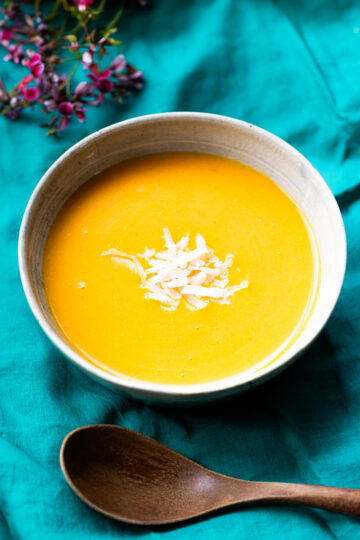

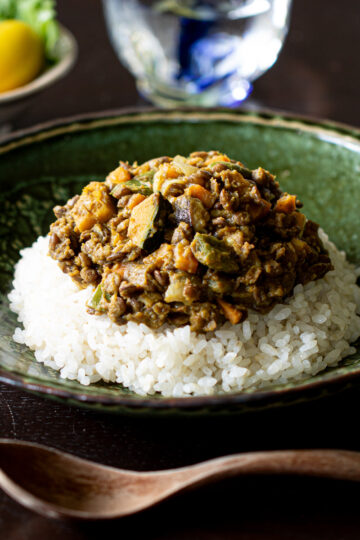
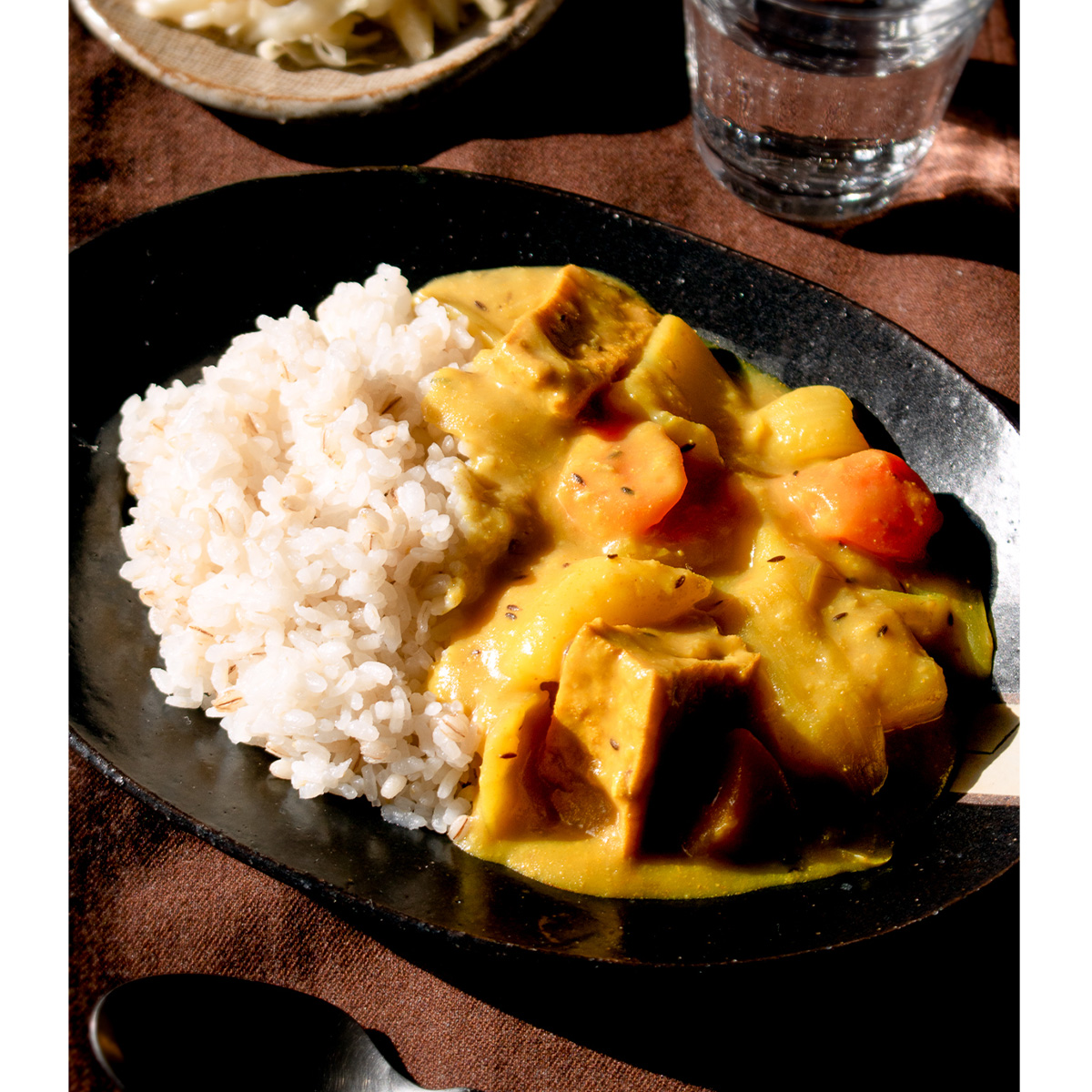

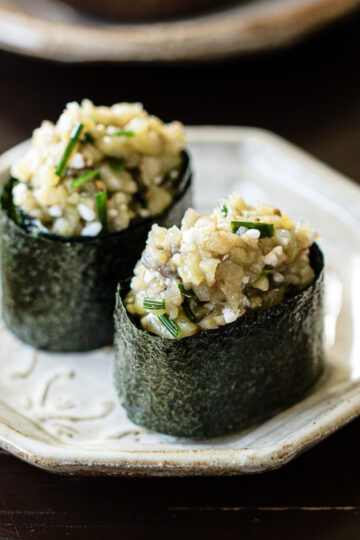

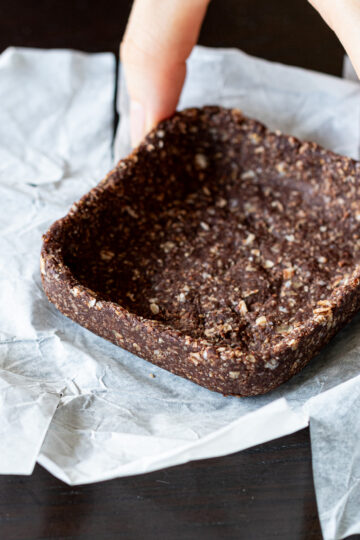
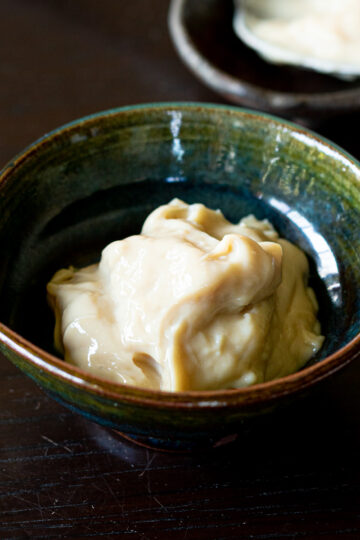
Comments
No Comments